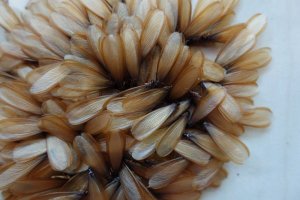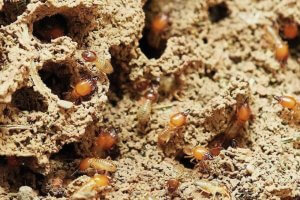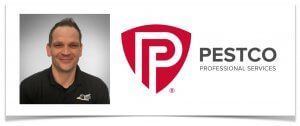Although the advent of warmer temperatures mark the presence of many pleasant sweet-smelling happenings throughout Pittsburgh, the swarming of subterranean termites isn’t one of them.
Usually, this occurs during the months of March and April and in broad daylight following a rain.
This species is the plague of Pittsburgh home owners and the one that our pest-control experts at Pestco Professional Services are most often called upon to remove.
Termites are small, pale soft-bodied insects that live in large colonies with several different castes, typically within a mound of earth.
Many species feed on wood and can be highly destructive to trees and timber.
Termites have had centuries to perfect their skills, as scientists estimate that they have inhabited our planet for more than 55 million years, even pre-dating ants.
Their endurance is linked to their ability to burrow and live in the soil.
Usually, the owner of a residence will encounter two types of termites; the worker and the swarmer (pictured below).
The creamy colored, 3-4 mm long workers seek and amass food for the entire colony and they build and maintain mud tubes and nests.
Their diet is comprised of cellulose, which is found both in wood and grass.
They are usually only seen after one of their mud strictures has been broken.
Dark brown or black swarmer termites are the colony’s reproductive caste.
They are approximately 4 mm long and they may or may not have wings.

What Are Subterranean Termites?
This termite species constructs tunnels known as mud tubes that protect it from the open air and grants ingress to food sources.
These underground nests of damaged wood also contain an accumulation of soil or mud.
While their diet is comprised primarily of cellulose, subterranean termites eat only softwood, and they eat with the grain and not across it, as is the case with other species.
Experts believe that digging the tunnels helps subterranean termites discover food sources.
Foraging termites produce pheromones that act as chemical messengers to other termites and attract them to a food source.
The strength of a pheromone trail is largely dependent on soil temperature, moisture and the size and quality of the food source.
Subterranean termites must live deep within the soil, which maintains a constant level of moisture, because they are always at risk of drying out.
They never venture very far from the soil because they must return periodically to replenish their body moisture.
Statistics Concerning Termite Residential Damage
More than 600,000 homes within the United States are afflicted annually with termite infestations. Subterranean termites eat incessantly, which makes them the most destructive insect species found anywhere in the nation.
Every year, more than 4 million American homes become vulnerable to a termite infestation.
The most current statistics indicate that termites incur an estimated annual $5 billion in property damages and repair costs.
This figure is even more staggering when it comes to damages incurred on building structures and crops, which amounts to an incredible $30 billion.
Subterranean termites are responsible for billions of dollars in residential structural damage each year.
They also eat books, other paper products and a variety of other plant-based goods.
Particularly terrifying from a homeowner’s perspective occurs when pest-management and pest-control expert inform them that some colonies have more than one egg-laying female, and that the nests can grow quickly and contain hundreds and sometimes thousands of insects.

Subterranean Termites Under Homes
Subterranean termites forage in soil for food and live underground.
Worker termites also build tunnels from mud, saliva and feces, which they use to remain protected while traveling to above-ground food sources.
While they cannot damage a foundation made of concrete or brick, they can enter a home through tiny cracks in the foundation.
Once the termite workers reach a home’s substructure, the destruction begins by eating through wooden structural supports wherever there is direct wood-to-ground contact.
They are also known to infest other easy-to-access wood near the foundation, including basement windows near the ground, floor joists in crawlspaces and wooden porches.
These insects eat only the softwood and are known to stuff the wood they are eating with soil in order to preserve its moisture.
In the case of all insect infestations, early detection is a positive factor in determining a means of elimination.
In the case of termites, however, it is a hundred times more so because colonies often take more than five years to grow to a size capable of causing damage, and they can live for years undetected.
Homeowners must remain on the lookout for warning signs marked by the presence of winged swarmers, mud tubes and evidence of damaged wood.
The average homeowner who discovers termite damage will spend an average of $3,000 for repairs.
Costs understandably will vary and depend upon the size, location and accessibility of the infestation as well as the specific construction of the residence.
Many homeowners experience the destruction of books, documents and photographs as well as wood.
It must be noted that although not a common occurrence, damages can be so extensive that pest care and pest management specialists may recommend that a home be completely demolished.
Pittsburgh Spring Termite Control
In the words of Nick Vasko (picture below), our ACE Certified service manager, “There are currently seven ACE-certified technicians throughout Western Pennsylvania and two of those are a part of our Pestco Professional Services family.
This, combined with our Quality Pro-certification and well over seven decades of continuous operation, make us one the most qualified pest control and pest management companies in all of Western Pennsylvania for home owners and business owners.”

Our team members are consistently at work in our Pittsburgh laboratories, determining through study and research via cutting edge equipment and tools how to best counteract the highly destructive nature of subterranean termites.
Their focus is twofold; the biology and behavior of termites and the development of new products that will not only eliminate future infestations, but will also serve to protect structures from their devastation.
We understand these silent destroyers and knows that the first step to their complete eradication begins with a thorough inspection of property, which we guarantee to each of our valued clientele.
We leave no stone unturned and assess every available option to insure the best plan of action for a specific residence.
Our technicians are well-trained and attend workshops and seminars on a regular basis to keep them informed of the latest methods and products for eliminating all types of pest infestations.
We service many homes within the Greater Pittsburgh area and help give residents some relief from the anxiety in dealing with the onslaught of spring termites, which can put a real damper on the fun of owning and enjoying one’s own home, especially during the warmer months of the year .
Call our teams today, for some peace of mind tomorrow!
Final thought on termites: Anger in the body is like a termite in the wood.~ Vikrant Parsai
What Are Subterranean Termites?
This termite species constructs tunnels known as mud tubes that protect it from the open air and grants ingress to food sources.
 Over 300 Reviews
Over 300 Reviews 